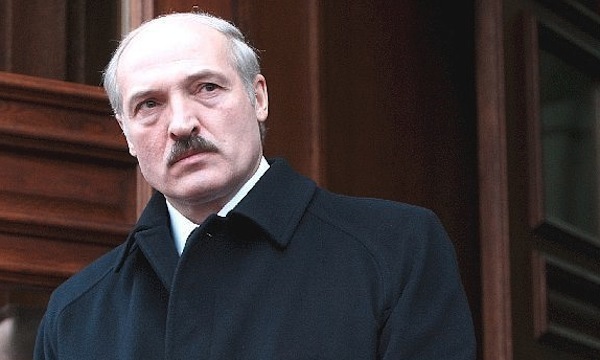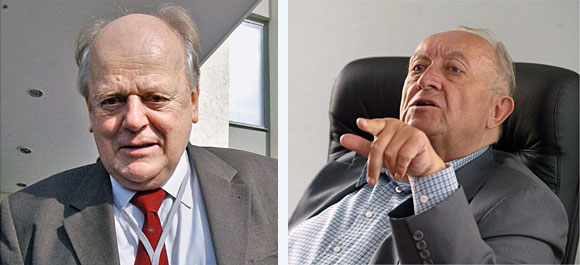The Institute of Modern Russian starts a series of articles on the political history of contemporary Belarus. The authoritarian regime imposed on the country by Alexander Lukashenko is often compared to Putin's regime in Russia, but the Belarusian president surpasses his Russian colleague in terms of years in power (18) and the political system’s rigidity. Our research shows that the evolution of authoritarianism in Belarus has reached its final stage: the country has reached a political and economic dead-end. In the history of Lukashenko’s rule there are many lessons for Russia.

In the West, Belarus was nicknamed as “Europe’s last dictatorship.” Alexander Lukashenko's regime has existed for 18 years, and during this time the Belarusian president has managed to maneuver between the interests of the West and Russia and to crush his internal political opposition. How does Lukashenko succeed in retaining power? What are Europe’s and Russia’s interests in Belarus? What chance of success does the Belarusian opposition have? IMR’s analyst Olga Khvostunova will try to provide answers to these questions.
Part One: From the Soviets to Dictatorship
National Project
The formation of most of the states in Central and Eastern Europe followed similar patterns. When their territories were under the influence of the Russian or Austro-Hungarian empires, the subjected nation’s intelligentsia developed a national myth that would evolve and become the basis for national political goals. Political parties would be born out of those myths and goals, and party competition would lead, sooner or later, to the creation of sovereign states.
In Belarus, this development was not fully realized: Belarusian ethnic nationalism has, thus far, not led to the development and implementation of a national project. This is the principal way in which Belarus differs from comparable neighboring countries like Poland, Lithuania, and Ukraine.
There are certain historical reasons that explain why a national project was not implemented in Belarus. In the second half of the 19th century, during the period of intense confrontation between Russia and Poland, ethnic processes in Belarus evolved under the influence of both the Russian empire’s bureaucratic structure and the Polish szlachta [nobility]. The Russians sought Russification of Belarus, the Polish—Polonization. As an alternative to foreign influence, the Belarusian intelligentsia developed its own, different idea of the country’s future that grew into Belarusian nationalism.
Due to the heavy war-time losses, Belarus went through the deepest sovietization of all the USSR republics. A new ideology was built around the idea of heroic victory over fascism, which became the starting point for developing a new mythology in Belarusian history.
On March 1918, shortly before the end of the World War I, Russia and Germany signed the Treaty of Brest-Litovsk, according to which large territories, including Belarus were ceded by Russia to Germany. As a result, the Belarusian People’s Republic was declared. It was the first attempt to establish a state on Belarusian territory on an ethnic basis. But soon thereafter, Germany conceded defeat, and withdrew its troops from Minsk. Russia renounced the terms of the Brest-Litovsk Treaty and, three weeks later, the Belarusian Soviet Republic was proclaimed in Smolensk.
Until 1939, the territories of, what is now, Western Belarus were a part of Poland, where the Belarusians lived as a national minority. In 1939, based on the Molotov-Ribbentrop Pact, Soviet troops occupied these territories and effectively annexed Western Belarus to the USSR. At the same time, as a result of the Stalinist purges, more than 130 thousand Belarusians (the majority of whom represented nationalist intelligentsia) fell victim to political repression; thirty thousand of these were executed. But it was during World War II that the country suffered most of its losses: by some estimates, approximately 1.5 million Belarusians, one sixth of the population, were slaughtered during the war.

About 12 thousand people participated in Belarusian partisan movement of 1941-44 (left). Based on the stories of Belarusian partisans' brave feats, the new mythology of the Belarusian Soviet Republic was created. Starting from 1950's, Belarus developed into a leading agricultural and industrial republic in the Soviet Union. Tractors branded Belarus, produced by the the Minsk Tractor Works, became a symbol of the Soviet Belarus.
As the Belarusian historian Yaroslav Shimov notes, due to the heavy war-time losses, Belarus went through the deepest sovietization of all the USSR republics. “The post-war political and economic elite of Belarus consisted of people of peasant origin who made their careers through the Communist party or by distinguishing themselves in the partisan resistance,” Shimov writes. “A new ideology was built around the idea of heroic victory over fascism, which became the starting point for developing a new mythology in Belarusian history.” Also, in Shimov’s opinion, the patriarchic peasantry culture had such a dominant influence on the political culture that it constitutes yet another factor contributing to the difference between Belarus and other Eastern European countries.
In the 1960’s and 70’s, Belarus underwent a period of intensive Russification: the Russian language became the language of the media, the education system, and political discourse. The Belarusian language was preserved only in folk culture. During the “perestroika” years, new signs of Belarusian nationalism appeared and the Belarusian People’s Front (BPF), founded by Zenon Poznyak, became the core of a renewed nationalist movement.
The Democratic Era
After the Soviet Union collapsed, BPF managed to become, but only briefly (until 1993), a powerful political force in Belarus. In contrast, the Lithuanian Nationalists Union and the Latvia National Independence Movement are still popular in their respective countries. BPF’s major goal, like that of the Baltic national movements, was to establish an independent national democratic state that would eventually join the European Union. But BPF operated in an absolutely different environment with a different population.
The Baltic national movements relied on a mature, strong national identity and national language, and the memory of lost independence. They only had to add actual independence to these attributes. In Belarus, national identity was underdeveloped and the country had undergone a more thorough and profound sovietization. Compared to the Baltic nationalist parties, BPF was proposing a far more extensive transformation of the people, tantamount to converting them into a different nation.
At first glance, the political landscape of Belarus had a diversity of parties, none of whom was able to become a dominant political force and to represent interests of the majority.
With the dissolution of the USSR, many other parties started to form spontaneously in Belarus. In 1991, a United Democratic Party (UDP) was created by uniting the representatives of the democratic wing of the Communist Party. The same year, the Belarusian Social Democratic Gromada was founded claiming it was the successor to the Belarusian Socialist Gromada that existed in early 20th century. Numerous other, smaller parties were also established, embracing the nationalist democratic segment of the Belarusian political spectrum. Still, the social base of each of these parties was insignificant.
The liquidation of the Soviet system in Belarus was the result of external, not internal, forces. The majority of the population felt nostalgic about the Soviet past. By the end of 1991, there was established a new Communist Party of Belarus whose members included apparatchiks of the lower and middle echelons of the former Belorussian Soviet Communist Party. The political center was occupied by the higher-ranking apparatchiks, who supported the Chairman of the Supreme Soviet of Belarus, Stanislav Shushkevich, and Prime Minister Vyacheslav Kebich.

After the Soviet Union collapsed, numerous political parties emerged in Belarus. Meanwhile, the executive power belonged to the Chairman of the Supreme Soviet Stanislav Shushkevich (left) and Prime Minister Vyacheslav Kebich (right).
The right wing of the political spectrum was occupied by Slavyansky Sobor “Belaya Rus” (Slavic Assembly “Belaya Rus”), or SSBR, which was established in June, 1992. It aimed at unifying the territories inhabited by the Russian, Belarusian and Ukrainian people. Its founders opposed pursuing the “Western path,” and, instead, based their views on Pan-Slavism.
At first glance, the political landscape of Belarus had a diversity of parties, none of whom was able to become a dominant political force and to represent interests of the majority. The ruling elite failed to come up with any distinct national idea. The Belarusian “party of power,” represented by Kebich and Shushkevich, had no articulated political views. First, they propagated “Sovereignization” and “Belarusization” of the country, then, in 1992-93, as the economic crisis reached its peak, they shifted to seeking support from Russia and to bonding with the Communists and Pan-Slavists.
Thus, a paradox was created in the Belarus political arena. Pluralism was present, but none of the parties had the unequivocal support of the majority of the population. The authorities, as a whole, were seen as opportunistic and corrupt, and not acting in the people’s interests. This perception only became stronger with the dramatic fall of living standards. In this critical situation, Alexander Lukashenko, a bright, charismatic politician, former director of the Gorodets state farm in Mogilev region, emerged as the one person who could attract the votes of the disaffected majority.

